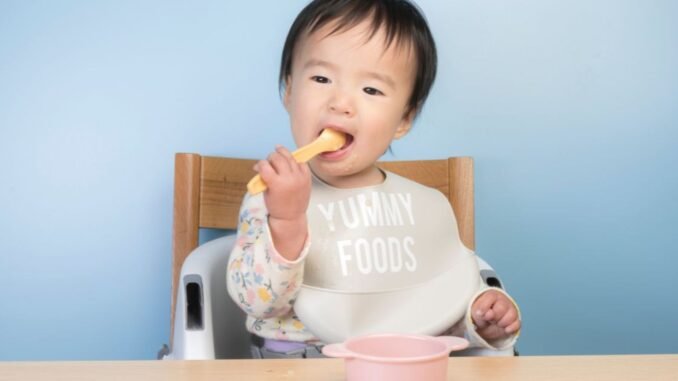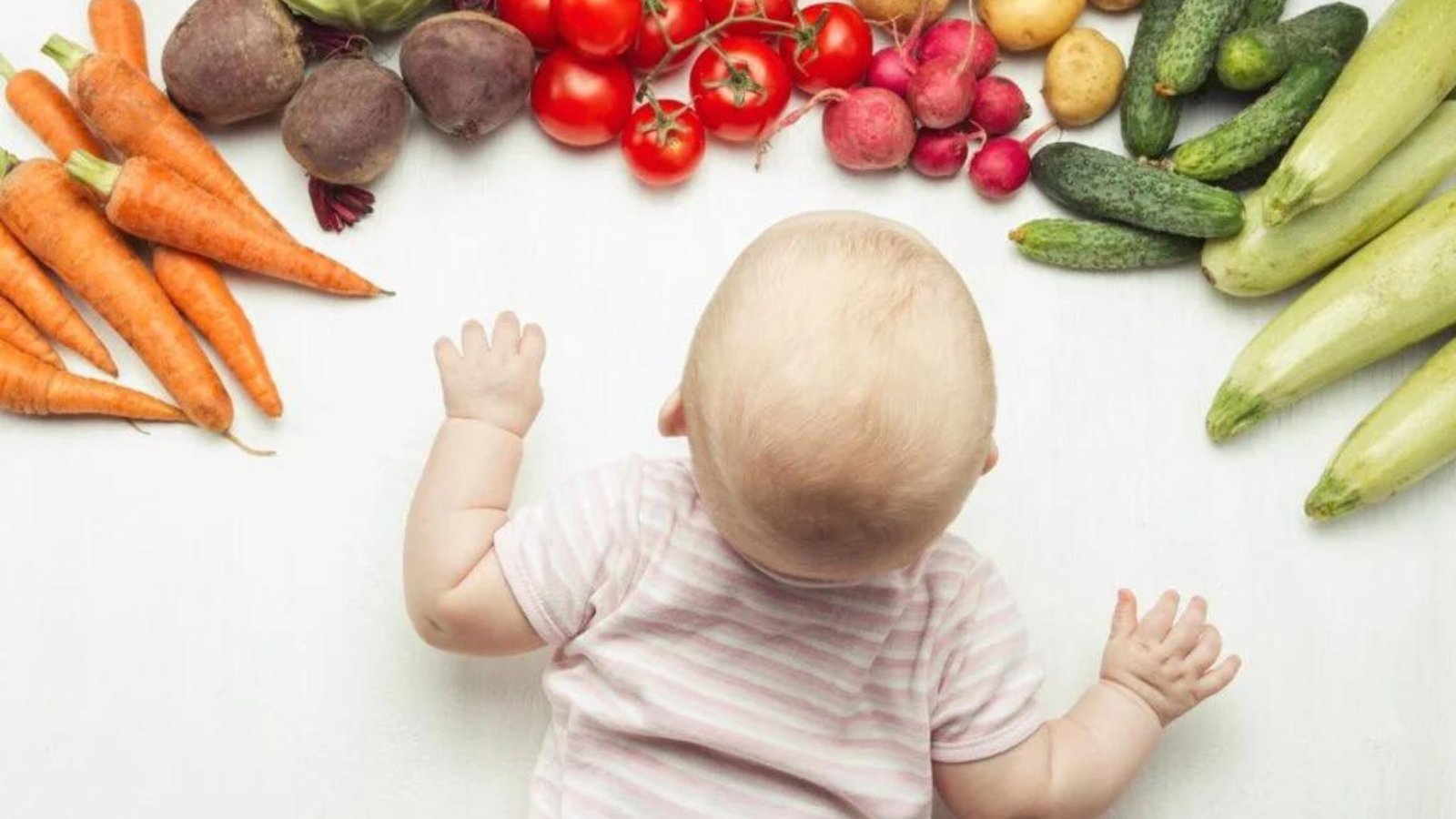
Baby-Led Weaning (BLW) is an approach to introducing solid foods to infants, allowing them to feed themselves from the start. Unlike traditional spoon-feeding methods, BLW encourages babies to explore various foods at their own pace, promoting self-feeding and independence.

Benefits of Baby-Led Weaning
Promotes Self-Regulation
Baby-led weaning (BLW) empowers infants to take charge of their food consumption, instilling invaluable habits of self-regulation and fostering a positive relationship with food. By allowing babies to explore and decide how much they eat during meals, BLW promotes a natural sense of hunger and fullness, contributing to the development of healthy eating habits that can last a lifetime. This approach encourages babies to listen to their bodies’ cues, learn their individual preferences, and develop a balanced approach to eating from an early age. As a result, BLW not only facilitates the transition to solid foods but also lays the foundation for a lifetime of nutritious eating patterns.
Encourages Development
Engaging in Baby-Led Weaning (BLW) provides infants with a hands-on opportunity to develop and refine their fine motor skills and hand-eye coordination. As babies grasp and manipulate various foods, they exercise the muscles in their hands and fingers, honing their ability to pick up and handle objects with precision. This tactile exploration encourages the development of dexterity and control, as infants learn to coordinate their movements to bring food to their mouths. Through repeated practice during BLW sessions, babies strengthen their hand-eye coordination as they visually track and reach for food, refining their ability to coordinate hand movements with visual stimuli. These fundamental motor skills acquired through BLW lay a crucial foundation for future tasks such as self-fee
Expands Palate
Introducing a diverse range of textures and flavours during baby-led weaning (BLW) provides infants with valuable exposure to a wide array of tastes and sensations. By offering foods with different textures—such as soft, crunchy, smooth, and chewy—babies have the opportunity to explore and experience a variety of mouthfeel sensations. Similarly, introducing foods with various flavours—such as sweet, savoury, sour, and bitter—exposes infants to a rich tapestry of tastes that stimulate their taste buds and sensory development.
This early exposure to diverse textures and flavors during BLW helps infants become more accepting and adventurous eaters, as they become accustomed to a broad spectrum of tastes and sensations. By familiarizing infants with a range of foods from an early age, BLW may help reduce the likelihood of picky eating behaviours later in life, as children develop a more open and adaptable palate, embracing a wider variety of foods with enthusiasm and curiosity.
Enhances Family Meals
Baby-Led Weaning (BLW) fosters the inclusion of infants in family meals right from the start, creating opportunities for social interaction and bonding during mealtimes. By involving babies in shared meals with family members, BLW emphasizes the importance of communal dining experiences and promotes a sense of togetherness. Infants seated at the family table during mealtimes are immersed in the sights, sounds, and smells of food preparation and consumption, providing valuable exposure to mealtime routines and social norms. As family members engage in conversation, laughter, and shared experiences around the table, babies absorb the social dynamics of mealtime interactions, fostering a sense of belonging and inclusion within the family unit. Additionally, the act of sharing meals with infants during BLW encourages caregivers to model positive eating behaviours and healthy food choices, laying the groundwork for lifelong habits of mindful eating and familial connection.
Getting Started with Baby-Led Weaning
Wait for Signs of Readiness
Babies are typically ready for BLW around six months when they can sit up unassisted and grasp objects.
Choose Appropriate Foods
Opt for soft, finger-sized foods that are easy to grasp and swallow, such as steamed vegetables, fruit slices, and cooked grains.
Supervise Carefully
Always supervise your baby during BLW to prevent choking hazards and ensure safe exploration of food.
Encourage Exploration
Allow your baby to explore food with their hands, offering guidance but avoiding interference with their feeding process.
Navigating Challenges
Choking Risk
While BLW is generally safe when appropriate foods are offered, parents should be vigilant to minimize choking risks and be prepared to respond effectively if they occur.
Messy Meals
Embrace the messiness of BLW as babies explore and experiment with food. Use a bib and place a mat under the highchair for easy cleanup.
Tips for Success
- Be Patient: BLW is a gradual process, and babies may take time to adjust to solid foods.
- Offer Variety: Introduce a variety of foods to expand your baby’s palate and nutritional intake.
- Model Healthy Eating Habits: Eat meals together as a family, modelling healthy eating behaviours and fostering positive associations with food.
Conclusion
Baby-led weaning is a natural and enjoyable approach to introducing solid foods to infants, promoting self-feeding, independence, and healthy eating habits from the start. By following the guidelines and tips outlined in this guide, you can embark on a successful BLW journey with your little one.
You will find the following information useful:
